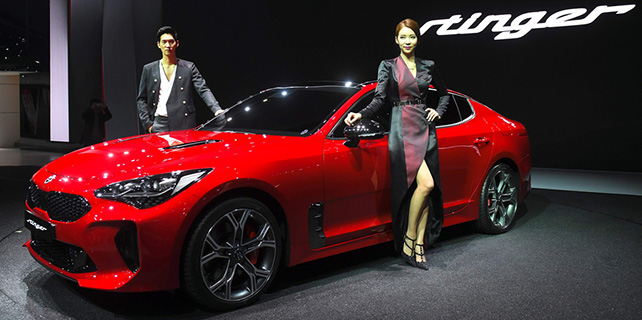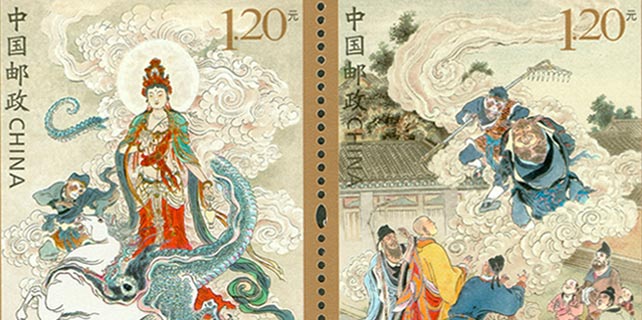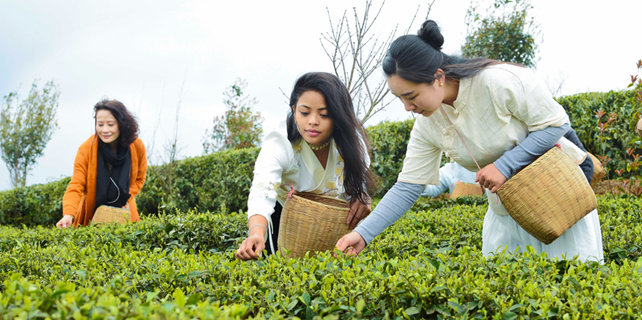Taking on the big boys

While it may have a relatively small footprint in China's sportswear market, Skechers has big plans to expand and challenge the more established foreign and domestic brands
Jaded with the usual Nike, Adidas and New Balance sneakers that were ubiquitous across society, a group of pop culture artists in South Korea turned their attention to vintage sneakers from the Skechers' D'Lite collection.
In less than a year, the black and white footwear that was endorsed by Britney Spears in the United States in the 1990s was spotted on the feet of nearly all Korean celebrities on and off the television screen.
In 2014, in tandem with the Korean drama craze in China, these footwear swept the Chinese mainland, earning themselves the nickname "panda shoes" because of their colors, and became one of the most sought-after fashion items of the year.
More than 3 million pairs of these Skechers shoes have been sold in China since 2014, accounting for about one-fifth of the company's sales in total.
Skechers has been enjoying an annual growth rate of nearly 100 percent from that year till today. Last year, it consolidated 6.5 billion yuan ($943.16 million), up 89 percent, in sales. It is expect to surpass 10 billion yuan this year before hitting 16 billion yuan by 2019.
The growth rate of China's sportswear industry in 2016 was 11 percent, according to consultancy firm Euromonitor International.
The growth of sports shoes, in particular, increased 16 percent in terms of retail sales by value, bucking against the negative 9 percent the shoes industry experienced last year.
"We beat our own sales goal every year," said Willie Tan, CEO of Skechers China, as he kicked off the opening of the brand's largest flagship store in Chengdu, Sichuan province, late in March.
The 61-year-old said that the decision to pick Chengdu, also popularly known as the home of the pandas, one of China's national treasures, will help the brand to gain momentum in the country and further penetrate the southwest region.
As the company's performance continues to improve, Tan has been looking for larger prime areas to "display and play" the brand's extensive portfolio which is updated with more than 3,000 new products designed by the headquarters in the US every year.
The flagship store, located in a prime location in Chengdu, covers 1,334 square meters, more than five times larger than the brand's biggest store from before, and features treadmills and a special area dedicated to kids.
The brand, which first entered China in 2007, is expected to open seven more stores of this concept in China, mostly in first-tiered cities like Shanghai and Beijing.
The son of a Chinese entrepreneur from Quanzhou, Fujian province, the birthplace of famous homegrown sportswear brands like Peak, Tan grew up in Guam and decided to introduce Skechers in China because "retail is in the blood of Quanzhou people".
Tan, who now oversees Skechers' business in Southeast Asia - they account for about a quarter of the brand's global business - said that the brand is still in the nascent stage of preparing for explosive growth.
Nike and Adidas, the two top sportswear players in China, presently have 7,000 and 10,000 stores respectively in China. Anta and Li Ning, the domestic leaders in this segment, have roughly the same number of stores.
Skechers currently has over 2,000 retail stores in the country but it plans to add over 1,000 more by the end of this year.
"Nike, Adidas and everyone else can be our competitor. But I am looking at it the other way around - I am their competitor, stealing their business as a relatively new entrant to the market," said Tan.
By pricing their shoes at between 500 and 600 yuan a pair - more accessible than foreign companies yet higher-end than domestic ones - Skechers enjoys a unique positioning in the China footwear market.
"We are also the first one to make, market and sell light shoes in China," added Tan.
"Our brand name is not an easy one to pronounce for many Chinese consumers. But more than once, I have heard consumers who pass by our stores refer to us as 'the comfortable shoes'. That's something I am more than happy to hear."
In contrast to many labels in China that have been advertising their products as professional exercise equipment, Skechers brands itself as one for amateurs.
"Our shoes can also be used for running. But we don't market it as such. We tell consumers that they can comfortably walk in the shoes," said Tan.
"Many foreign brands used to think consumers should adapt to the brand, but I believe it is the other way around," said Tan.
The logic behind this approach, said Tan, is that China's fitness product market is still relatively young. He said that this is one of the many lessons he and his team have learned from the market.
He explained that the company's first four years in the Chinese market were tough as it was still trying to figure out what Chinese consumers, in particular those from the younger generation, wanted.
In 2008, a year after Skechers entered China, the majority of sportswear brands were hit by heavy inventory and underwhelming growth because of overconfidence caused by the Beijing Olympic Games that year.
Looking ahead, Tan foresees that his main challenge lies not in "catching up with Nike or Adidas", but in following the ever-changing behaviors of Chinese consumers.
xujunqian@chinadaily.com.cn
















